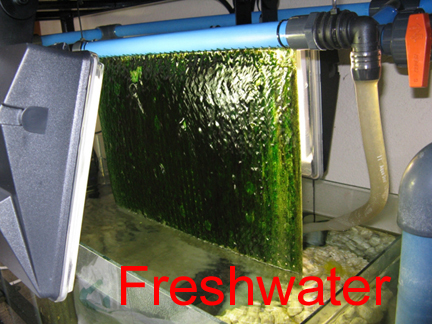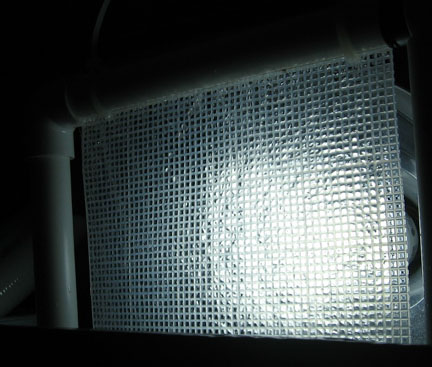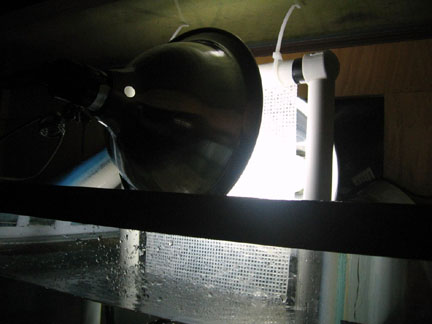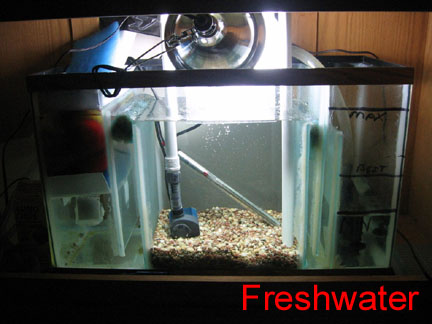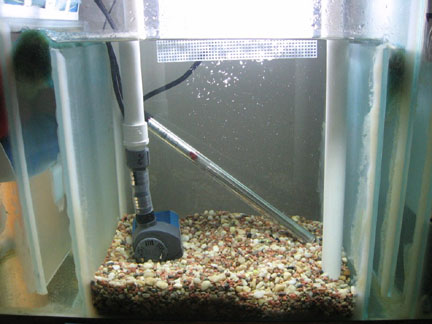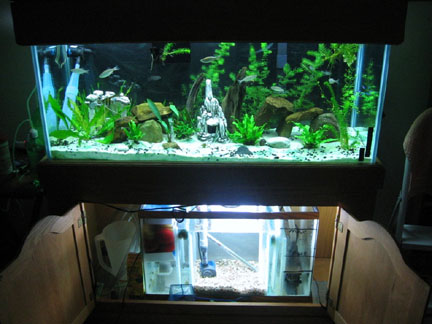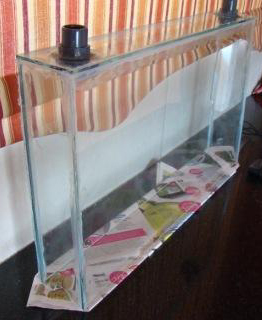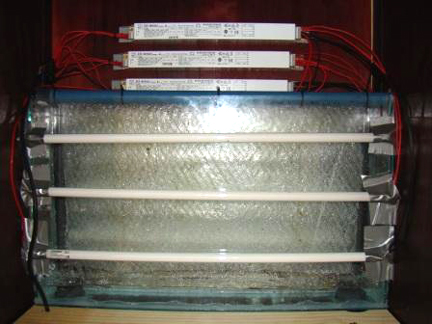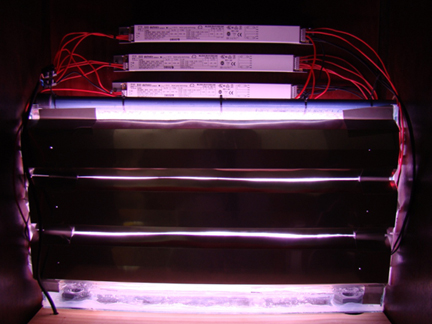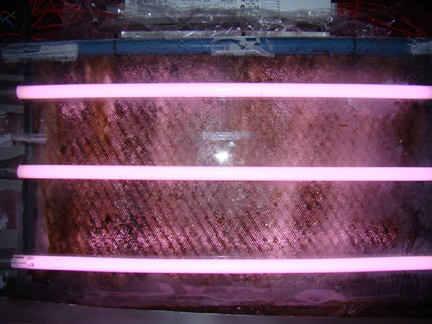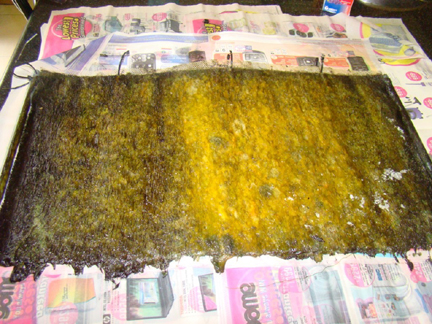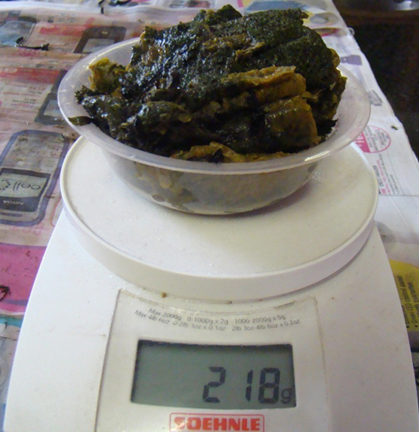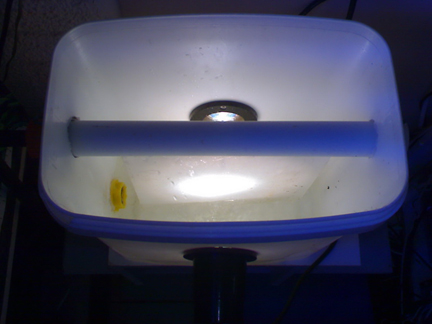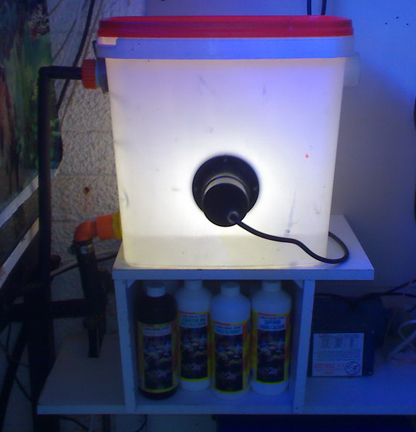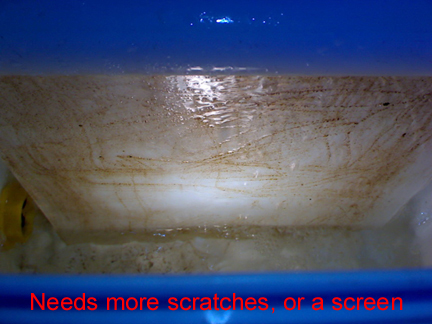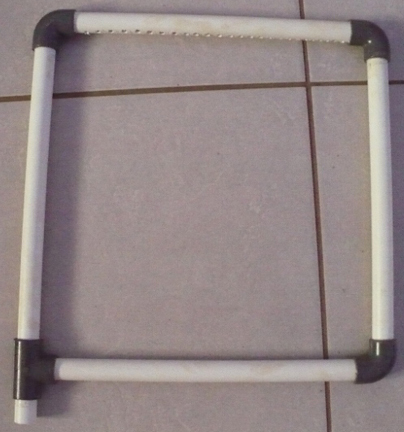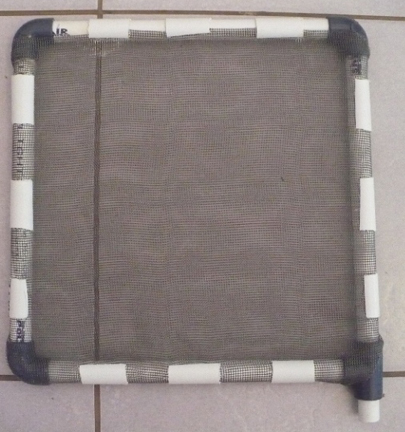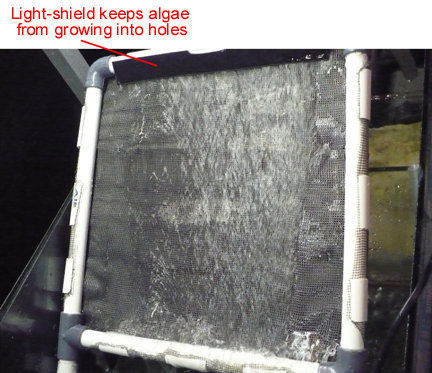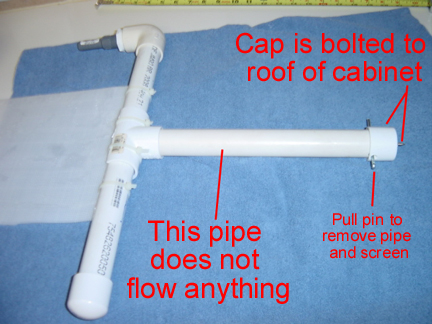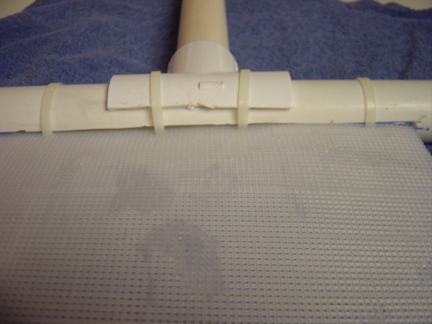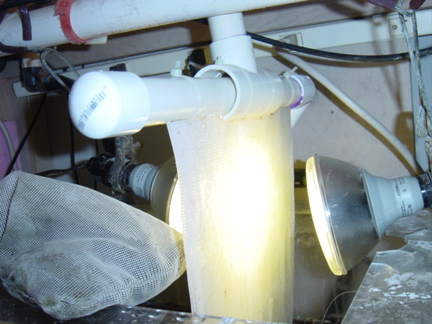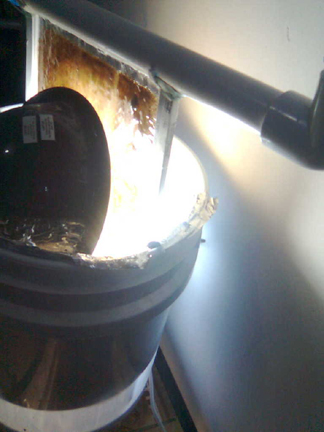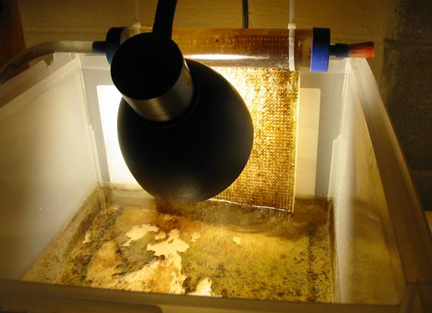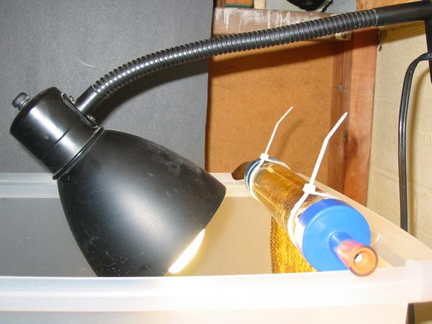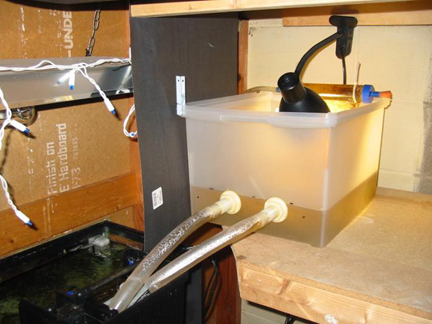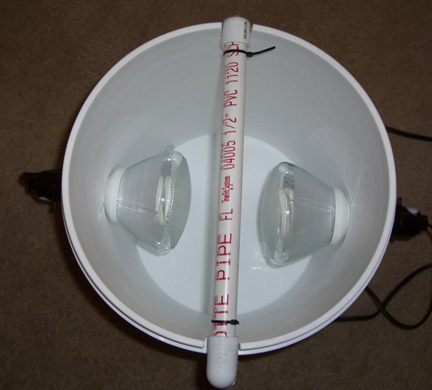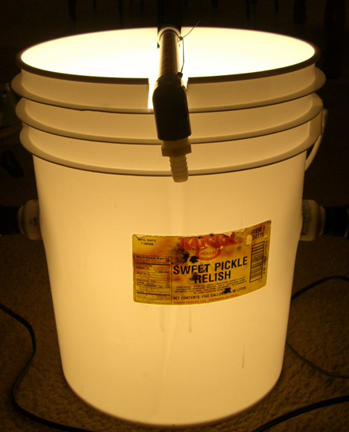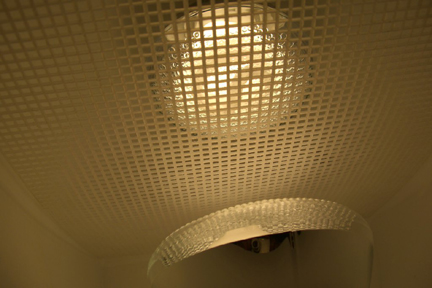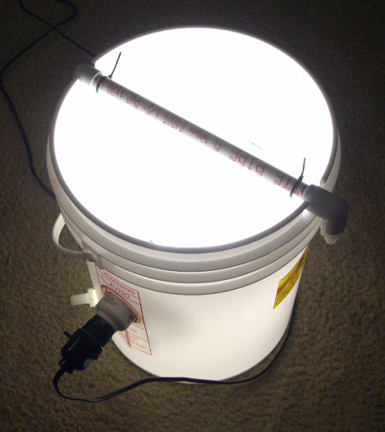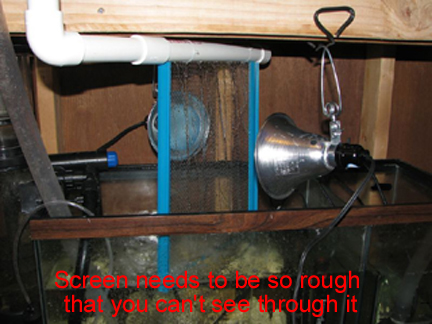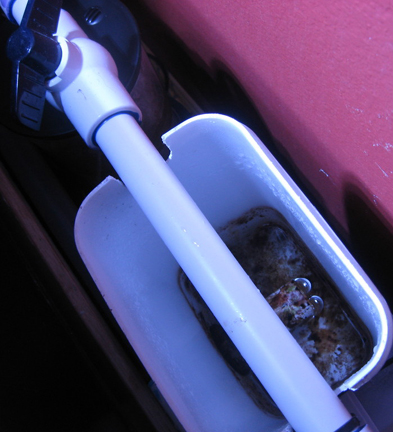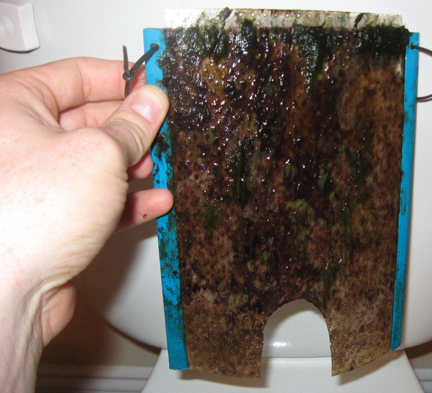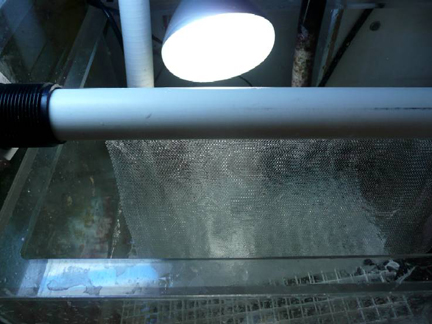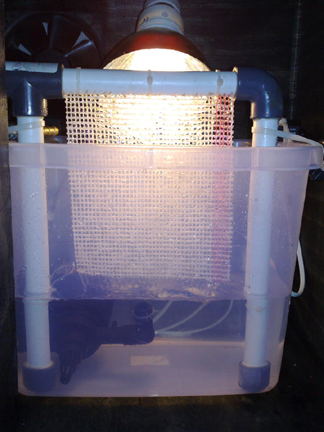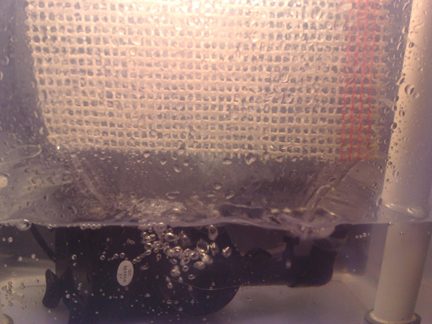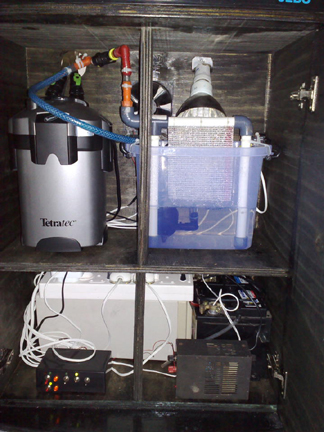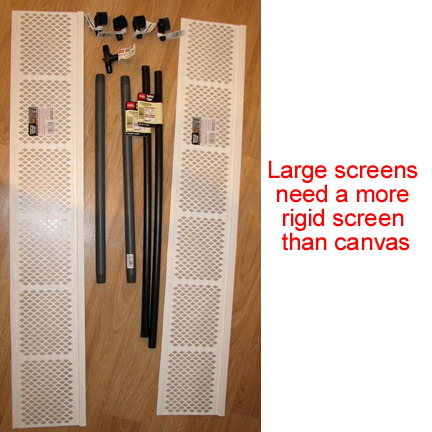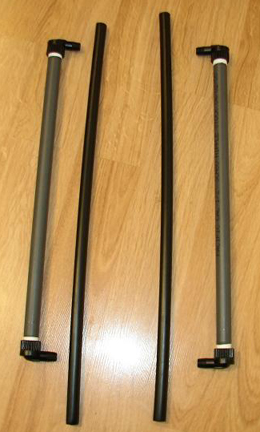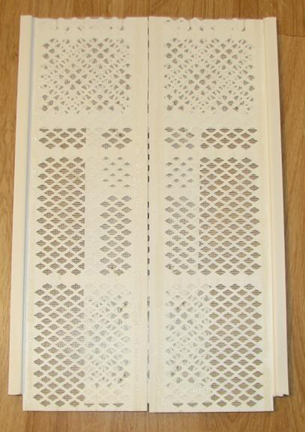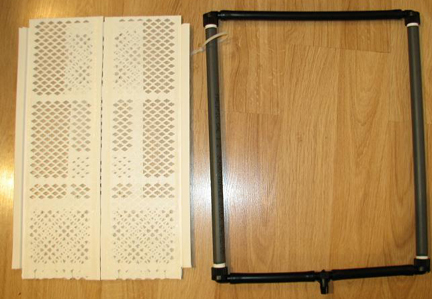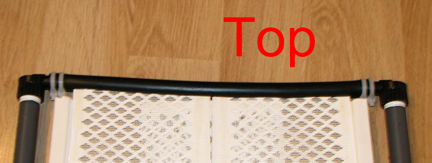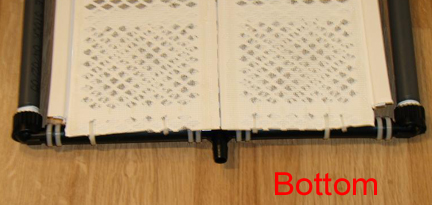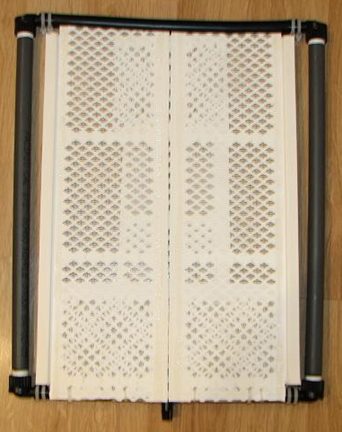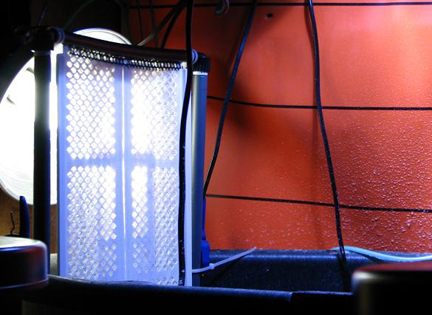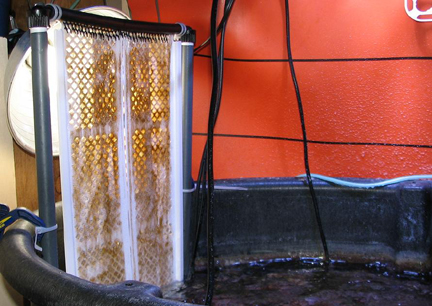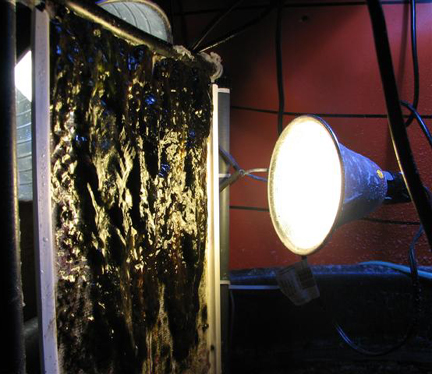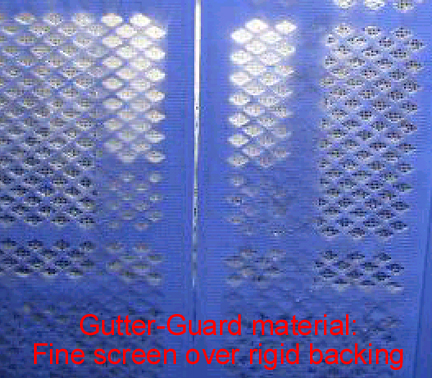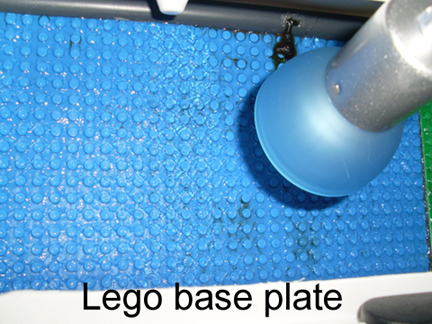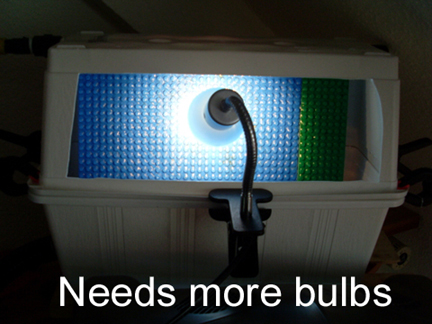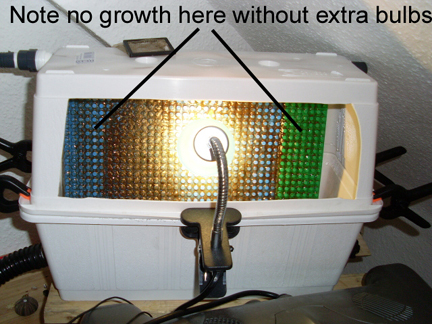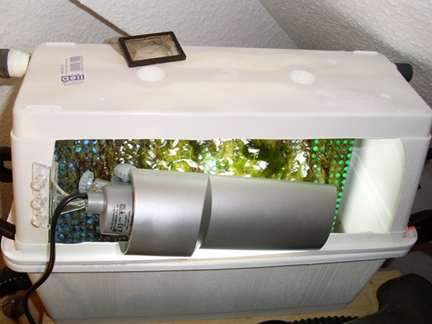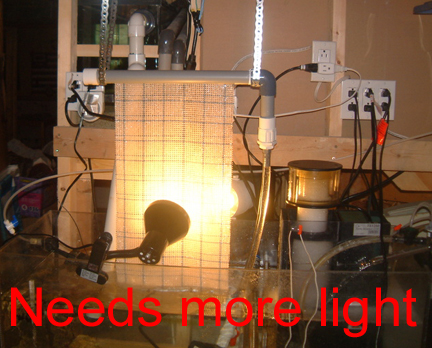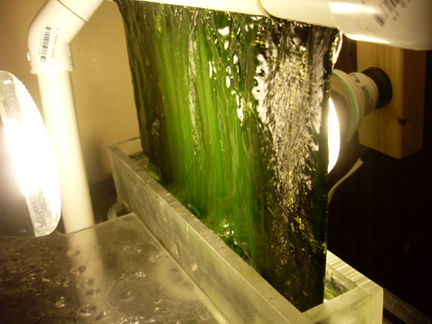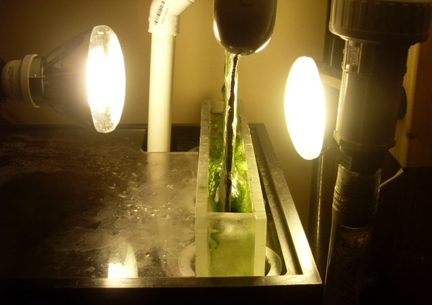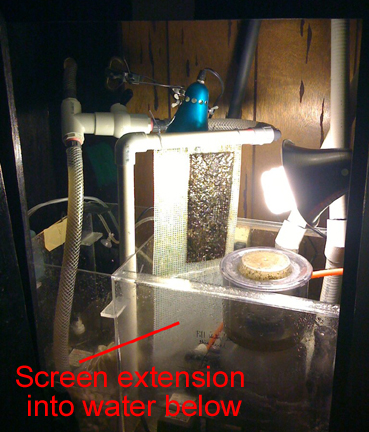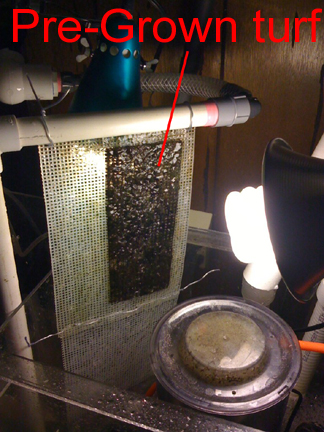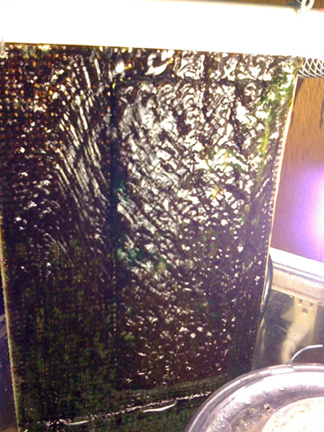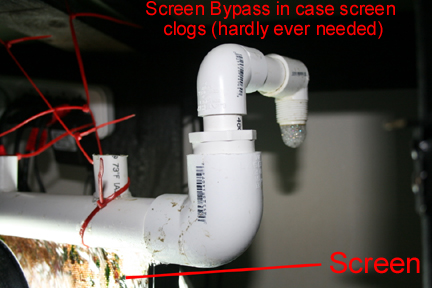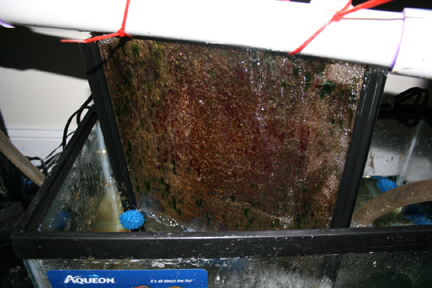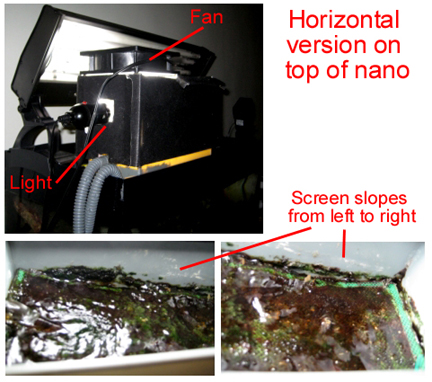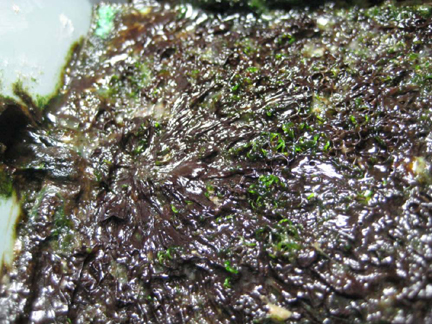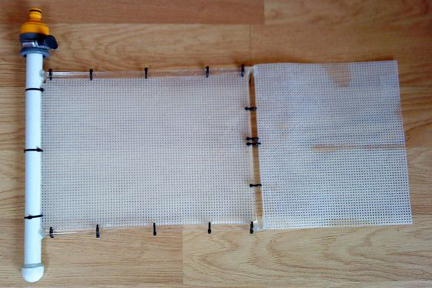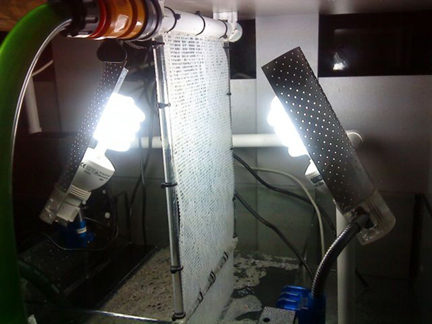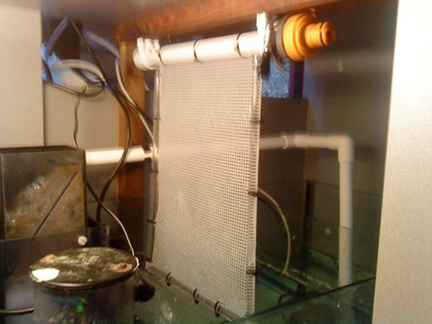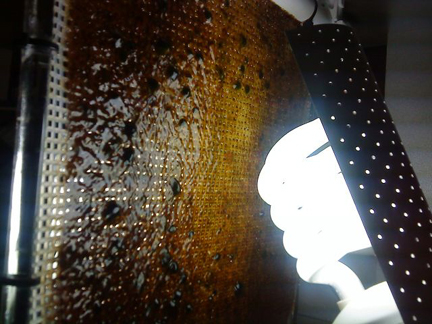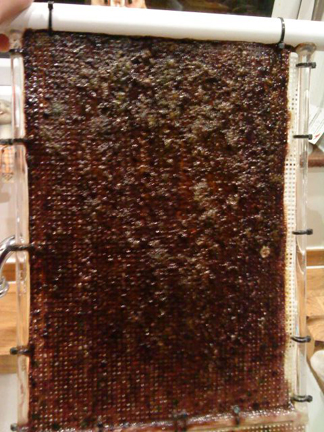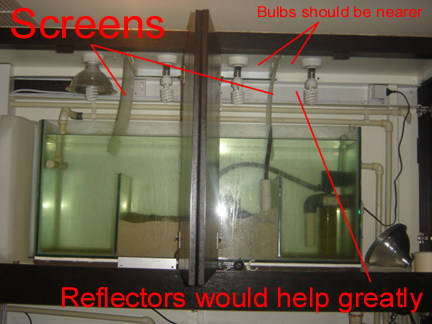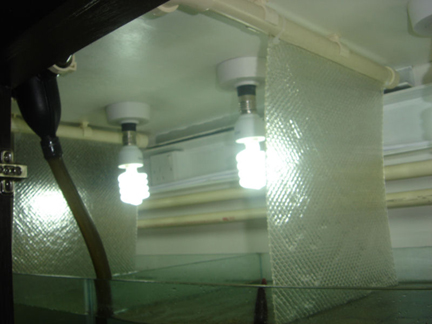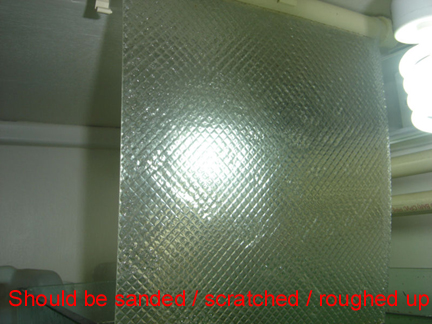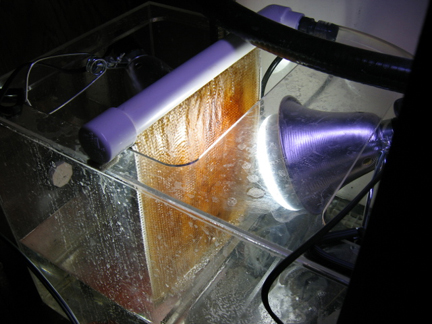hey SM... i have my Turf scrubber up and running now and all is well, water look crystal clear and everyone is happy. quick question, if the scrubber removes inorganic N and P....does it also remove essential trace elements that reef requires??..and if so how would i know how much to re-dose the tank....
Mega Powerful Nitrate and Phosphate Remover - DIY!
- Thread starter SantaMonica
- Start date
I'll be posting some excerpts on trace element articles soon, but for now: Scrubbers remove metals (like copper) that you don't want. Also, the articles recommend that you don't dose any trace elements, since most tanks are overloaded with them already (traces arrive in the food, and they are not exported much by skimmers.)
"Kcress" on the algae scrubber site has just finished his version of a G2 LED scrubber, for testing. A G2 is a self-contained scrubber, but the LEDs themselves are not the screen, like they are with a G3. Anyways, for testing purposes, he only has LED's on one side of the screen, and he only used low-power LEDs to avoid heat issues:
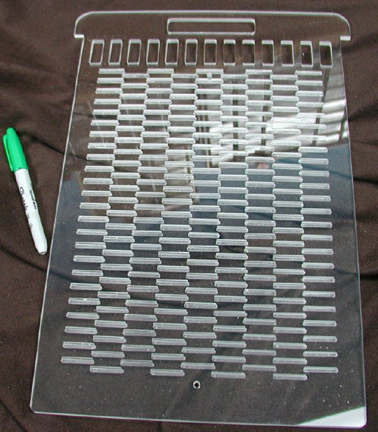
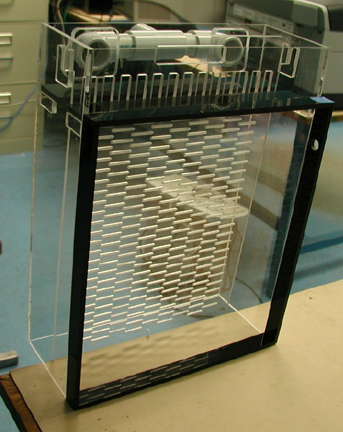
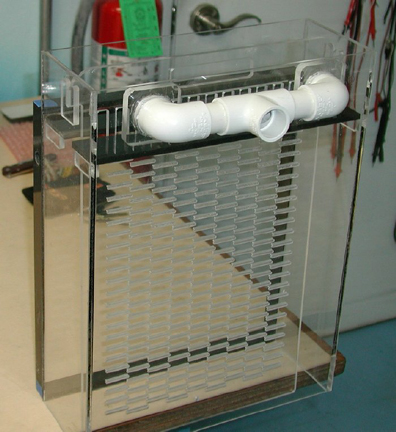
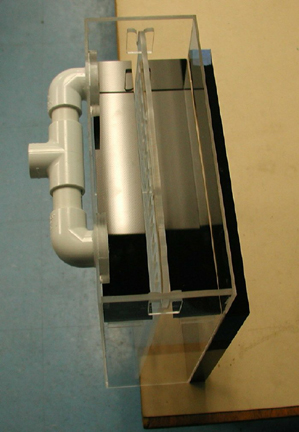
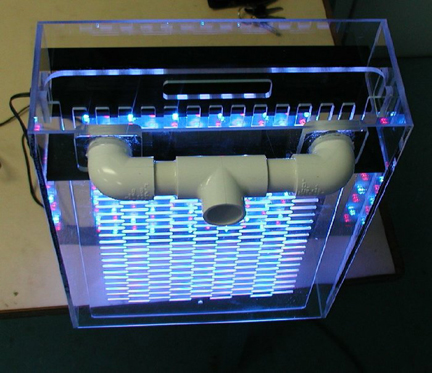
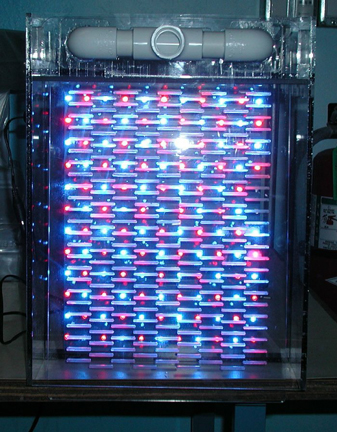






Part 4 of 7:
Taken from "The Food of Reefs, Part 4: Zooplankton" by Eric Borneman
The Food of Reefs, Part 4: Zooplankton by Eric Borneman - Reefkeeping.com
[Note: "Zooplankton" are tiny animals (food) floating in the water]
"Copepods comprise by far the largest fraction of total zooplankton - more than all the other groups combined.
"Zooxanthellate corals (many diverse species) could survive "indefinitely" if provided with adequate zooplankton, even if totally deprived of light. In contrast, corals provided light and deprived of zooplankton did not survive.
"One of the greatest myths among reefkeepers is that "SPS" corals depend mostly on light, and require less food than "LPS" corals. This is entirely untrue. As an example, consider the data from [pic not shown]. This graph shows the capture rate of an equivalent biomass of two corals, the large-polyped Montastraea cavernosa and the very small-polyped Madracis mirabilis. For those unfamiliar with Madracis, it is related to and somewhat resembles Pocillopora and Stylophora. The capture rate of the small polyped coral was 36 times greater than the large-polyped coral! Furthermore, M. cavernosa has been shown in other studies to be a voracious zooplanktivore.
"Many other studies confirm the predatory [feeding] abilities and requirements of "SPS" corals. It should not be surprising, given the fast growth rate and fecundity of many small polyped species. In other words, more growth and reproduction requires more energy, especially nitrogen for tissue growth. The difference, if one exists between "SPS" and "LPS" corals, lies primarily in the size of the food captured. Most of the prey of small polyped corals may just be too small to see. Aquarists have a tendency to be strongly visual, and so if gross observations don't indicate that a coral is consuming food offered to it, they wrongfully assume the coral must not need to be fed.
"Some species rely more on zooplankton than others, and if anything, the "SPS" corals feed on zooplankton a lot. In fact, most corals show linear feeding saturation dynamics under all but extremely high particle concentrations. What this means is that corals have a hard time "getting full." They continue to capture prey, and do not get satiated until prey densities become so great that such levels are almost never possible. To put it another way, even if you were to pour a pound of food per day into an average sized reef aquarium, the corals would still "be hungry."
"In a September 2002 coral reef conference in Cambridge, several papers were presented that should give an idea of not only the very latest information, but also emphasize what is written above.
"Many years ago, one of the only [food studies] for a coral was done for what might be considered the ultimate shallow-water "SPS" coral, Acropora palmata (Bythell 1988, 1990). The study showed, basically, that 70% of this coral's nitrogen needs were met by feeding, and that 91% of its carbon needs were met by light. [In 2002] three more corals, the larger polyped Montastraea cavernosa, M. annularis and Menadrina meandrites [were studied, and the researchers found] zooplankton to provide 20-80 times the carbon and 112-460 times the nitrogen previously shown for Acropora palmata. Finally [in 2002, researchers studied] the role of zooplankton consumption on the metabolism of the small-polyped coral, Stylophora pistillata under 3 different conditions of light (80, 200, 300 µmoles m-2 s-1) and 2 feeding regimes (Artemia and natural plankton). They found that regardless of light, fed corals had higher chlorophyll-A concentrations, higher protein levels, and had photosynthesis rates 2-10 times higher than those deprived of food. This group also measured calcification rates, both in the dark and in light, and found that calcification, as is well known to be the case, is enhanced by light. However, for the first time it was shown that feeding results in calcification rates 50-75% higher than in control corals (not fed). It was also found that feeding does not affect the light-enhancement process of photosynthesis on calcification. To make these results completely understandable, if corals can feed on zooplankton, they will calcify 50-75% faster irrespective of light levels provided.
"Of all the many things that can potentially increase respiration, photosynthesis, and calcification -- and have been shown again and again to do so absolutely -- feeding and water flow are the major players. Light, of course, is critically important as well, but aquarists by and large can and do provide enough quantity and quality of light for corals. Period. Phytoplankton, while a very beneficial addition to aquaria, does not feed most corals (Borneman 2002). Something as significant as zooplankton to both coral and coral reefs would seem worthy of the highest efforts in trying to produce, add, grow, substitute or in some way provide to tanks. I cannot think of a single greater accomplishment and advance for aquarists than to provide by whatever means (higher export and higher input, larger refugia, purchase, plankton tow, culture, etc.) significantly greater levels of zooplankton or zooplankton substitutes to their corals. I hope I am being dramatic enough by writing this, for this is among the most important steps that must be made to realize the majority of those lofty goals and ideals that are so often stated and desired by those keeping corals in aquariums.
[Skimmers remove zooplankton; Scrubbers add zooplankton]
.
Taken from "The Food of Reefs, Part 4: Zooplankton" by Eric Borneman
The Food of Reefs, Part 4: Zooplankton by Eric Borneman - Reefkeeping.com
[Note: "Zooplankton" are tiny animals (food) floating in the water]
"Copepods comprise by far the largest fraction of total zooplankton - more than all the other groups combined.
"Zooxanthellate corals (many diverse species) could survive "indefinitely" if provided with adequate zooplankton, even if totally deprived of light. In contrast, corals provided light and deprived of zooplankton did not survive.
"One of the greatest myths among reefkeepers is that "SPS" corals depend mostly on light, and require less food than "LPS" corals. This is entirely untrue. As an example, consider the data from [pic not shown]. This graph shows the capture rate of an equivalent biomass of two corals, the large-polyped Montastraea cavernosa and the very small-polyped Madracis mirabilis. For those unfamiliar with Madracis, it is related to and somewhat resembles Pocillopora and Stylophora. The capture rate of the small polyped coral was 36 times greater than the large-polyped coral! Furthermore, M. cavernosa has been shown in other studies to be a voracious zooplanktivore.
"Many other studies confirm the predatory [feeding] abilities and requirements of "SPS" corals. It should not be surprising, given the fast growth rate and fecundity of many small polyped species. In other words, more growth and reproduction requires more energy, especially nitrogen for tissue growth. The difference, if one exists between "SPS" and "LPS" corals, lies primarily in the size of the food captured. Most of the prey of small polyped corals may just be too small to see. Aquarists have a tendency to be strongly visual, and so if gross observations don't indicate that a coral is consuming food offered to it, they wrongfully assume the coral must not need to be fed.
"Some species rely more on zooplankton than others, and if anything, the "SPS" corals feed on zooplankton a lot. In fact, most corals show linear feeding saturation dynamics under all but extremely high particle concentrations. What this means is that corals have a hard time "getting full." They continue to capture prey, and do not get satiated until prey densities become so great that such levels are almost never possible. To put it another way, even if you were to pour a pound of food per day into an average sized reef aquarium, the corals would still "be hungry."
"In a September 2002 coral reef conference in Cambridge, several papers were presented that should give an idea of not only the very latest information, but also emphasize what is written above.
"Many years ago, one of the only [food studies] for a coral was done for what might be considered the ultimate shallow-water "SPS" coral, Acropora palmata (Bythell 1988, 1990). The study showed, basically, that 70% of this coral's nitrogen needs were met by feeding, and that 91% of its carbon needs were met by light. [In 2002] three more corals, the larger polyped Montastraea cavernosa, M. annularis and Menadrina meandrites [were studied, and the researchers found] zooplankton to provide 20-80 times the carbon and 112-460 times the nitrogen previously shown for Acropora palmata. Finally [in 2002, researchers studied] the role of zooplankton consumption on the metabolism of the small-polyped coral, Stylophora pistillata under 3 different conditions of light (80, 200, 300 µmoles m-2 s-1) and 2 feeding regimes (Artemia and natural plankton). They found that regardless of light, fed corals had higher chlorophyll-A concentrations, higher protein levels, and had photosynthesis rates 2-10 times higher than those deprived of food. This group also measured calcification rates, both in the dark and in light, and found that calcification, as is well known to be the case, is enhanced by light. However, for the first time it was shown that feeding results in calcification rates 50-75% higher than in control corals (not fed). It was also found that feeding does not affect the light-enhancement process of photosynthesis on calcification. To make these results completely understandable, if corals can feed on zooplankton, they will calcify 50-75% faster irrespective of light levels provided.
"Of all the many things that can potentially increase respiration, photosynthesis, and calcification -- and have been shown again and again to do so absolutely -- feeding and water flow are the major players. Light, of course, is critically important as well, but aquarists by and large can and do provide enough quantity and quality of light for corals. Period. Phytoplankton, while a very beneficial addition to aquaria, does not feed most corals (Borneman 2002). Something as significant as zooplankton to both coral and coral reefs would seem worthy of the highest efforts in trying to produce, add, grow, substitute or in some way provide to tanks. I cannot think of a single greater accomplishment and advance for aquarists than to provide by whatever means (higher export and higher input, larger refugia, purchase, plankton tow, culture, etc.) significantly greater levels of zooplankton or zooplankton substitutes to their corals. I hope I am being dramatic enough by writing this, for this is among the most important steps that must be made to realize the majority of those lofty goals and ideals that are so often stated and desired by those keeping corals in aquariums.
[Skimmers remove zooplankton; Scrubbers add zooplankton]
.
Update: Pod Size
All the talk of how a scrubber "grows pods" has given some folks the idea of trying to catch the pods in a net. I think they might be expecting large pods like they see crawling around their sand and rocks at night. But actually what grows in scrubbers is the microscopic baby pod, which look like a spec of dust. This is because the weekly scrubber cleaning (in FW) kills most of the pods before they can eat too much of the algae. While this makes the scrubber work really good at removing nutrients (since the pods will not have a chance to eat the algae and put it back into the water), it also limits the growth period of the pods to 7 days. So what you get are millions of tiny white pod specs that fall off the scrubber and float through the water; if you have good circulation, the water might even look "dusty". This is exactly what you want: Large numbers of live zooplankton (baby pods) floating through the water, feeding your corals and small fish. Just like a real reef.
All the talk of how a scrubber "grows pods" has given some folks the idea of trying to catch the pods in a net. I think they might be expecting large pods like they see crawling around their sand and rocks at night. But actually what grows in scrubbers is the microscopic baby pod, which look like a spec of dust. This is because the weekly scrubber cleaning (in FW) kills most of the pods before they can eat too much of the algae. While this makes the scrubber work really good at removing nutrients (since the pods will not have a chance to eat the algae and put it back into the water), it also limits the growth period of the pods to 7 days. So what you get are millions of tiny white pod specs that fall off the scrubber and float through the water; if you have good circulation, the water might even look "dusty". This is exactly what you want: Large numbers of live zooplankton (baby pods) floating through the water, feeding your corals and small fish. Just like a real reef.
Update: Ultra Low Phosphate
Many people, after having great success with their scrubbers, have brought their phosphate down so low that their test kits can't measure it. And the nuisance algae has been mostly cleared out of the display. However, these people start seeing a fuzzy detritus-looking accumulation on some parts of the rocks, and sometimes on the sand. They clean it off, but it comes right back. What is it?
What they are seeing is phosphate coming out of the rocks(!). This is a great thing to happen. It requires two situations: (1) You previously had high levels of phosphate in your water (higher than .1) for several weeks or more, and (2) You now have very low levels of phosphate in your water. It's very counter-intuitive, and it will make you think that things are going wrong, especially since this type of algae growth looks just like "detritus" (but it's not.) Things are actually going very right, and here is why:
Phosphate is like water: It flows from higher levels to lower levels. For example, if you have two aquariums connected with a pipe at the bottom, the water levels would be the same in each tank. But if you poured extra water into one tank, it's level would rise for a second, then the water would flow into the other aquarium until the levels were equal again (although both levels would now be higher). Now, if you removed some water from one of the aquariums, it's level would drop for a second, then the water from the other aquarium would flow into it until they both evened out again (although both levels would now be lower). If you kept removing water from just one of the aquariums, the levels of both aquariums would keep falling, until they both reached the bottom. This is exactly how phosphate works.
Situation (1): In the previous weeks or months, when your phosphate levels in your water were high, the phosphate was flowing from the water INTO the rocks and sand and anything else that is made up of calcium carbonate, such as coral skeletons and clam shells. The phosphate did this because it's level in the water was "higher" than the phosphate in the rocks and sand. This part of the process is invisible, since Inorganic Phosphate is invisible. You don't see it going into the rocks and sand, but your rocks and sand are indeed being "loaded up". And if your phosphate in your water goes up even higher (say, .5), then even more phosphate goes into your rocks and sand, until it evens out again. You probably also see nuisance algae on your glass and other non-rock surfaces, because there is enough phosphate in the WATER to feed the algae anyhwere it's at. And that's the important point to remember: There is enough phosphate in the WATER to feed the algae ANYWHERE.
Situation (2): Now, you've been running your scrubber (or any phosphate remover) for a while, and your phosphate in the WATER has been testing "zero" on your hobby test kit. Nuisance algae has been reduced or eliminated on your glass and everywhere else. This is because there is not enough phosphate in the WATER to feed the nuisance algae. However, since the phosphate in the water is now very low, guess where it's still high? IN THE ROCKS! So, phosphate starts flowing FROM the rocks and sand, back INTO the water. And as long as your scrubber keeps the phosphate low in the WATER, the phosphate will keep flowing out of the rocks until it is at the same level as the water. You can visualize the phosphate as heat coming off of a hot brick; you can't see it, but it's flowing out of the brick. Anyways, since you now have all this phosphate coming out of the rocks and sand, guess where algae starts to grow? ON THE ROCKS AND SAND!
There is a striking differece between the algae in Situation 1 and 2, however; in (1) the algae is on everything: Glass, rocks, sand, pipes, thermometers, pumps, etc., and the algae is a typical algae that you normally get in your display. But in (2), the algae is dark, short and fuzzy, just like detritus, and it's only growing on the rocks and sand. And if you look closely at the rocks, it only growing on certain PARTS of the rocks (usuallly narrow parts that stick out), and not growing on the rocks right next to it. This is because certain areas of the rock have absorbed more phosphate than others, and thus are releasing more phosphate into the water. Glass, plastic, etc, don't absorb phosphate, so thats' why there is no algae growing on them now, since they are not releasing phosphate back into the water. So the algae now grows only where it can find enough phosphate, and for now, this is only on certain parts of the rock and sand where enough phosphate is flowing back into the water.
But just like the aquarium example above, the levels of phosphate in the rocks and water will eventually even out, and the flowing will stop. When this happens, the nuisance algae will disappear from the rocks, never to return again (unless of course your phosphate levels rise again for some reason.) The time for this to happen is weeks to months, depending upon how much phosphate is stored in the rocks. So don't give up!
Many people, after having great success with their scrubbers, have brought their phosphate down so low that their test kits can't measure it. And the nuisance algae has been mostly cleared out of the display. However, these people start seeing a fuzzy detritus-looking accumulation on some parts of the rocks, and sometimes on the sand. They clean it off, but it comes right back. What is it?
What they are seeing is phosphate coming out of the rocks(!). This is a great thing to happen. It requires two situations: (1) You previously had high levels of phosphate in your water (higher than .1) for several weeks or more, and (2) You now have very low levels of phosphate in your water. It's very counter-intuitive, and it will make you think that things are going wrong, especially since this type of algae growth looks just like "detritus" (but it's not.) Things are actually going very right, and here is why:
Phosphate is like water: It flows from higher levels to lower levels. For example, if you have two aquariums connected with a pipe at the bottom, the water levels would be the same in each tank. But if you poured extra water into one tank, it's level would rise for a second, then the water would flow into the other aquarium until the levels were equal again (although both levels would now be higher). Now, if you removed some water from one of the aquariums, it's level would drop for a second, then the water from the other aquarium would flow into it until they both evened out again (although both levels would now be lower). If you kept removing water from just one of the aquariums, the levels of both aquariums would keep falling, until they both reached the bottom. This is exactly how phosphate works.
Situation (1): In the previous weeks or months, when your phosphate levels in your water were high, the phosphate was flowing from the water INTO the rocks and sand and anything else that is made up of calcium carbonate, such as coral skeletons and clam shells. The phosphate did this because it's level in the water was "higher" than the phosphate in the rocks and sand. This part of the process is invisible, since Inorganic Phosphate is invisible. You don't see it going into the rocks and sand, but your rocks and sand are indeed being "loaded up". And if your phosphate in your water goes up even higher (say, .5), then even more phosphate goes into your rocks and sand, until it evens out again. You probably also see nuisance algae on your glass and other non-rock surfaces, because there is enough phosphate in the WATER to feed the algae anyhwere it's at. And that's the important point to remember: There is enough phosphate in the WATER to feed the algae ANYWHERE.
Situation (2): Now, you've been running your scrubber (or any phosphate remover) for a while, and your phosphate in the WATER has been testing "zero" on your hobby test kit. Nuisance algae has been reduced or eliminated on your glass and everywhere else. This is because there is not enough phosphate in the WATER to feed the nuisance algae. However, since the phosphate in the water is now very low, guess where it's still high? IN THE ROCKS! So, phosphate starts flowing FROM the rocks and sand, back INTO the water. And as long as your scrubber keeps the phosphate low in the WATER, the phosphate will keep flowing out of the rocks until it is at the same level as the water. You can visualize the phosphate as heat coming off of a hot brick; you can't see it, but it's flowing out of the brick. Anyways, since you now have all this phosphate coming out of the rocks and sand, guess where algae starts to grow? ON THE ROCKS AND SAND!
There is a striking differece between the algae in Situation 1 and 2, however; in (1) the algae is on everything: Glass, rocks, sand, pipes, thermometers, pumps, etc., and the algae is a typical algae that you normally get in your display. But in (2), the algae is dark, short and fuzzy, just like detritus, and it's only growing on the rocks and sand. And if you look closely at the rocks, it only growing on certain PARTS of the rocks (usuallly narrow parts that stick out), and not growing on the rocks right next to it. This is because certain areas of the rock have absorbed more phosphate than others, and thus are releasing more phosphate into the water. Glass, plastic, etc, don't absorb phosphate, so thats' why there is no algae growing on them now, since they are not releasing phosphate back into the water. So the algae now grows only where it can find enough phosphate, and for now, this is only on certain parts of the rock and sand where enough phosphate is flowing back into the water.
But just like the aquarium example above, the levels of phosphate in the rocks and water will eventually even out, and the flowing will stop. When this happens, the nuisance algae will disappear from the rocks, never to return again (unless of course your phosphate levels rise again for some reason.) The time for this to happen is weeks to months, depending upon how much phosphate is stored in the rocks. So don't give up!
hey SM, just a side note...yesterday i went on a glass bottom tour of the huge beaucoup reef in Tobago...anyways, we noticed that there was lots of turf looking algae growing in between the corals...the guide was explaining to us that it has unfortunately proliferated due to all the recent trace pollution that has been in the water....this seems very familiar to your DIY system...
SM. I switched my screen from the tank divider mesh to the plastic canvas screen (from fabric store) and got much better results. Take a look! I got this 2 weeks after re-building the scrubber.
Also, I ran a treatment of Red Slime Remover to help rid the brown/red slime forming in my sump (and maybe even on my scrubber). It has eliminated it.
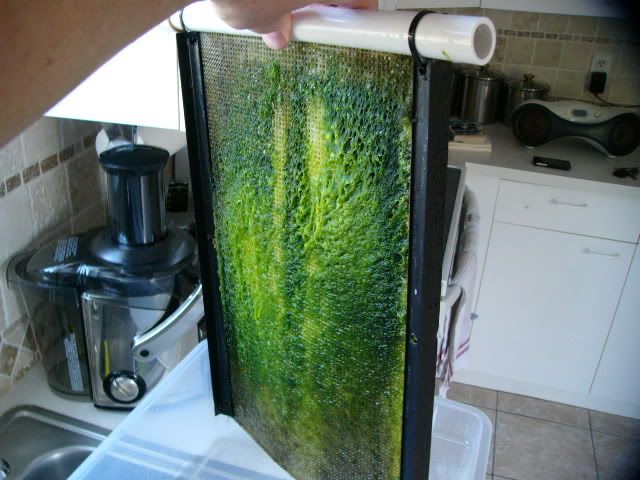
Also, I ran a treatment of Red Slime Remover to help rid the brown/red slime forming in my sump (and maybe even on my scrubber). It has eliminated it.

Update: Grow Bulbs
The best bulbs to grow algae are "grow bulbs", which are pink in color. Sometimes these bulbs are called "plant grow" bulbs. But don't confuse these bulbs with "plant bulbs" which are blue or green. Blue bulbs have a different purpose, and green bulbs are just to make plants look nice. It's the pink bulbs that give the algae the type of light that it grows best with. The light won't seem as bright as a white bulb, however, but it works much better. You can find grow bulbs at any garden store, home improvement store, hydroponics store, or online. Each bulb should be at least 23 watts.
The best bulbs to grow algae are "grow bulbs", which are pink in color. Sometimes these bulbs are called "plant grow" bulbs. But don't confuse these bulbs with "plant bulbs" which are blue or green. Blue bulbs have a different purpose, and green bulbs are just to make plants look nice. It's the pink bulbs that give the algae the type of light that it grows best with. The light won't seem as bright as a white bulb, however, but it works much better. You can find grow bulbs at any garden store, home improvement store, hydroponics store, or online. Each bulb should be at least 23 watts.
Update: Cross-cuts
Making cross-cuts in the slot is now recommended for all pipes. The biggest advantage of cross-cuts is that when algae grows up into the slot, a cross-cut will still allow water to flow out on top of the algae. Cross-cuts do require more flow, so if your pump/pipe combination is having trouble delivering the recommended 35 gph per inch of slot (53 lph/cm), then you might want to get more flow first. Start with one cross-cut every inch (2.5cm), and later try one every .5 inch (1.25cm):
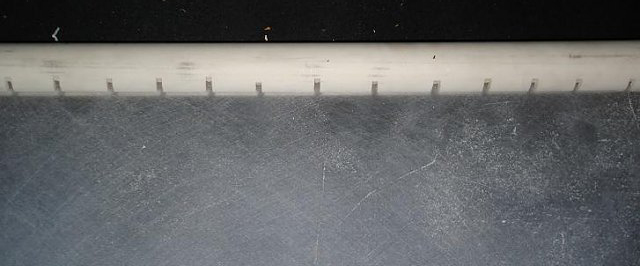
Making cross-cuts in the slot is now recommended for all pipes. The biggest advantage of cross-cuts is that when algae grows up into the slot, a cross-cut will still allow water to flow out on top of the algae. Cross-cuts do require more flow, so if your pump/pipe combination is having trouble delivering the recommended 35 gph per inch of slot (53 lph/cm), then you might want to get more flow first. Start with one cross-cut every inch (2.5cm), and later try one every .5 inch (1.25cm):



